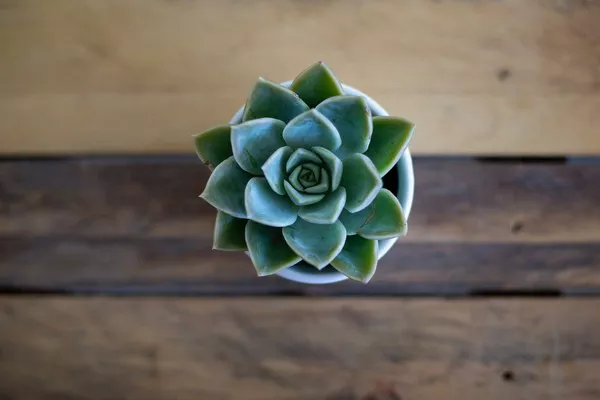Succulents have gained immense popularity in recent years due to their low-maintenance nature and unique aesthetic appeal. As delightful houseplants, they have become the go-to choice for both experienced gardeners and beginners alike. However, ensuring the health of your succulents is crucial for their longevity and vibrant growth. This article will explore the key indicators to determine the health of succulents, including their appearance, soil, watering, lighting, and common issues to watch out for.
1. Appearance: The First Clue
The appearance of a succulent is the first and most evident clue to its health. A healthy succulent should exhibit the following characteristics:
Plump and Firm Leaves: Succulents store water in their leaves, making them look plump and turgid. When gently pressed, healthy leaves should feel firm to the touch, indicating sufficient water storage.
Vibrant Coloration: Healthy succulents typically display vivid and consistent colors, often ranging from deep greens to vibrant reds and purples. Extreme color changes, such as yellowing or browning, can indicate stress or health issues.
Compact Growth: Succulents with compact, tight growth patterns are usually healthier than those with stretched, elongated stems. Tall and leggy succulents may be a sign of inadequate light or excessive watering.
2. Soil: The Foundation of Succulent Health
The right soil is fundamental to the well-being of succulents. Here’s what to consider:
Well-draining Soil: Succulents are adapted to arid conditions and require excellent drainage to prevent root rot. Choose a well-draining soil mix specifically formulated for succulents or create your own blend with sandy soil, perlite, and peat moss.
Aeration: Proper soil aeration is crucial for healthy root development. Compacted soil can suffocate roots and lead to root rot. Periodically aerate the soil by gently poking it with a chopstick or similar tool.
3. Watering: Moderation is Key
Overwatering is one of the most common reasons for succulent health issues. Proper watering techniques include:
Watering Frequency: Succulents prefer infrequent but thorough watering. Allow the soil to dry out completely between waterings. The frequency will depend on factors such as the climate, container size, and succulent species.
Watering Technique: When watering, aim to moisten the soil evenly without drenching the plant’s leaves or stem. Water the soil directly at the base of the plant to prevent waterlogging.
Seasonal Adjustments: Succulents may need less water during the dormant winter months and more during their active growing season in spring and summer.
4. Lighting: Striking the Right Balance
Light is a crucial factor in succulent health. Here’s what to consider when it comes to lighting:
Sunlight Requirements: Most succulents thrive in bright, indirect sunlight. Too much direct sunlight can scorch their leaves, while too little light can lead to stretching and elongation.
Rotating the Plant: If your succulent is leaning or growing toward one side, it may not be receiving enough light. Rotate the plant occasionally to ensure even exposure to sunlight.
Supplemental Lighting: In low-light conditions, consider using artificial grow lights, particularly during the winter months, to supplement natural sunlight.
5. Temperature: Consider Your Climate
Succulents are generally adaptable, but extreme temperatures can impact their health. Keep these points in mind:
Hardiness Zone: Different succulent species have varying temperature tolerances. Familiarize yourself with your succulent’s hardiness zone and take necessary precautions during extreme weather conditions.
Avoid Cold Drafts: Succulents may suffer if placed near cold drafts or air conditioning vents. Ensure they are protected from sudden temperature fluctuations.
6. Pruning and Propagation: Promote Growth and Health
Regular pruning and propagation can enhance the overall health of your succulents:
Remove Dead or Dying Parts: Prune away any dead or dying leaves or stems. These can attract pests and diseases and consume valuable energy that could be directed towards healthy growth.
Propagate for New Growth: Propagation allows you to create new succulent plants and rejuvenate the mother plant. Follow proper techniques, such as leaf cuttings or stem cuttings, to propagate successfully.
7. Common Issues and Remedies
Even with the best care, succulents may encounter health issues. Here are some common problems and remedies:
Overwatering: If you notice yellowing leaves, rotting stems, or mushy roots, it could be a sign of overwatering. Allow the soil to dry out completely before watering again, and consider repotting in well-draining soil.
Underwatering: Symptoms of underwatering include shriveled or wilted leaves. Increase watering frequency, ensuring the soil is adequately moistened.
Pests and Diseases: Keep a close eye on your succulents for signs of pests like mealybugs, aphids, or fungal diseases. Isolate affected plants, and consider using natural remedies or insecticidal soaps to address the issue.
Conclusion
Caring for succulents can be a rewarding experience, and knowing how to assess their health is essential for their well-being. By observing their appearance, providing the right soil, water, and light, and addressing common issues promptly, you can ensure that your succulents thrive and beautify your living spaces for years to come. Remember, each succulent species may have its unique care requirements, so always research and cater to their specific needs for optimal health and growth.、


